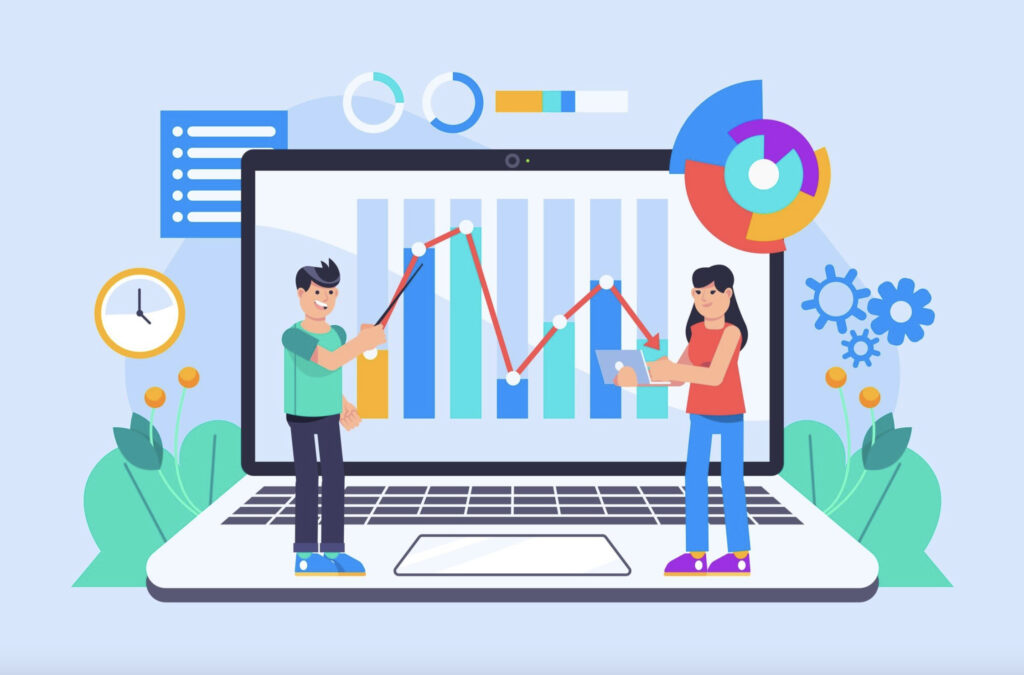Understanding the customer journey is crucial for any business aiming to optimize its conversion rates. With the rise of data analytics tools, tracking and analyzing customer behavior has become more accessible than ever before. How analytics can optimize conversions lies in its ability to track user interactions, uncover patterns, and refine the customer experience at each touchpoint, ultimately guiding users toward a desired action, such as making a purchase or signing up for a service.
The Customer Journey: Key Stages and Their Impact
The customer journey is a complex process consisting of multiple stages that potential buyers move through before making a final decision. These stages typically include Awareness, Consideration, and Decision.
- Awareness: At this stage, customers become aware of a product or service. They may encounter a brand through ads, content marketing, or social media. The key to optimizing conversions at this stage is ensuring that your message reaches the right audience and piques their interest.
- Consideration: During this phase, customers are actively evaluating their options. They compare features, prices, and reviews. This is where personalization and targeted messaging become essential for conversion optimization.
- Decision: In the final stage, the customer is ready to make a purchase or take another conversion action. Streamlining the purchasing process and offering incentives, such as discounts or limited-time offers, can help close the deal.
Each of these stages offers an opportunity to influence customer behavior and optimize conversions, but the key lies in understanding how your audience interacts with your brand at every touchpoint.
How Analytics Can Optimize Conversions
How analytics can optimize conversions is all about understanding the patterns that emerge from customer behavior. Analytics tools, such as Google Analytics, heat maps, and user journey tracking, provide businesses with detailed insights into how users navigate a website, which pages they visit, and where they drop off.
By examining these behaviors, businesses can pinpoint areas where customers are struggling and optimize those touchpoints to reduce friction and increase the likelihood of conversion. For example, if analytics reveal that a significant number of users are abandoning their carts at the checkout page, it may suggest that there are issues with the checkout process, such as a lack of trust signals, complicated forms, or unexpected shipping costs. Addressing these pain points can significantly improve conversion rates.
Furthermore, data-driven insights allow businesses to measure the effectiveness of their marketing campaigns and identify which channels are driving the most conversions. This knowledge enables companies to allocate their marketing budget more effectively and focus on strategies that generate the best results.
Leveraging Analytics to Personalize the Customer Journey
One of the most powerful ways how analytics can optimize conversions is by enabling businesses to personalize the customer journey. Analytics allows companies to track user behavior and segment audiences based on their preferences, actions, and demographic data. This level of personalization creates a more tailored and engaging experience that resonates with users.
For instance, by analyzing browsing history, purchase behavior, and search queries, businesses can serve personalized product recommendations, offers, or content. This not only enhances the user experience but also increases the likelihood of conversion. Customers are more likely to convert when they feel that a brand understands their needs and is offering relevant solutions.
Additionally, personalization can extend to email marketing, where analytics can help optimize subject lines, send times, and content based on user behavior, leading to higher open rates and conversions.
Conversion Optimization Techniques Using Analytics
There are various conversion optimization techniques that businesses can implement using the data insights derived from analytics. A/B testing and multivariate testing are two of the most effective methods.
- A/B Testing: This involves comparing two versions of a webpage, ad, or email to see which one performs better in terms of conversion rates. By testing different elements—such as call-to-action buttons, headlines, images, and product descriptions—businesses can determine which combination resonates most with their audience and drives conversions.
- Multivariate Testing: This method allows businesses to test multiple variations of a webpage or marketing element at the same time, helping to identify the most effective combination of factors for optimizing conversions.
Other techniques include analyzing exit-intent data to prevent cart abandonment, optimizing landing pages to ensure they are clear and relevant, and making use of real-time analytics to adjust strategies on the fly.
Challenges in Using Analytics for Conversion Optimization
While analytics provides valuable insights, it’s not always smooth sailing. Some of the challenges businesses face when using analytics for conversion optimization include data overload, inaccurate data, and the need for constant adjustments. With so many data points to analyze, it can be difficult to identify the most important insights, and businesses may struggle to prioritize their actions effectively.
To overcome these challenges, it’s essential to have a clear strategy in place. Defining key performance indicators (KPIs) and using analytics to measure these metrics will help businesses focus on what matters most. Additionally, leveraging automation tools can help streamline the process of analyzing and acting on data, making it easier to optimize conversions.
Conclusion
In conclusion, how analytics can optimize conversions is about using data to gain deeper insights into customer behavior, identify opportunities for improvement, and fine-tune the customer journey. From personalizing experiences to testing different strategies, analytics empowers businesses to make data-driven decisions that enhance user engagement and increase conversion rates. By continuously tracking, measuring, and adjusting based on analytics, companies can create a more seamless and effective path to conversion, ultimately driving greater business success.
